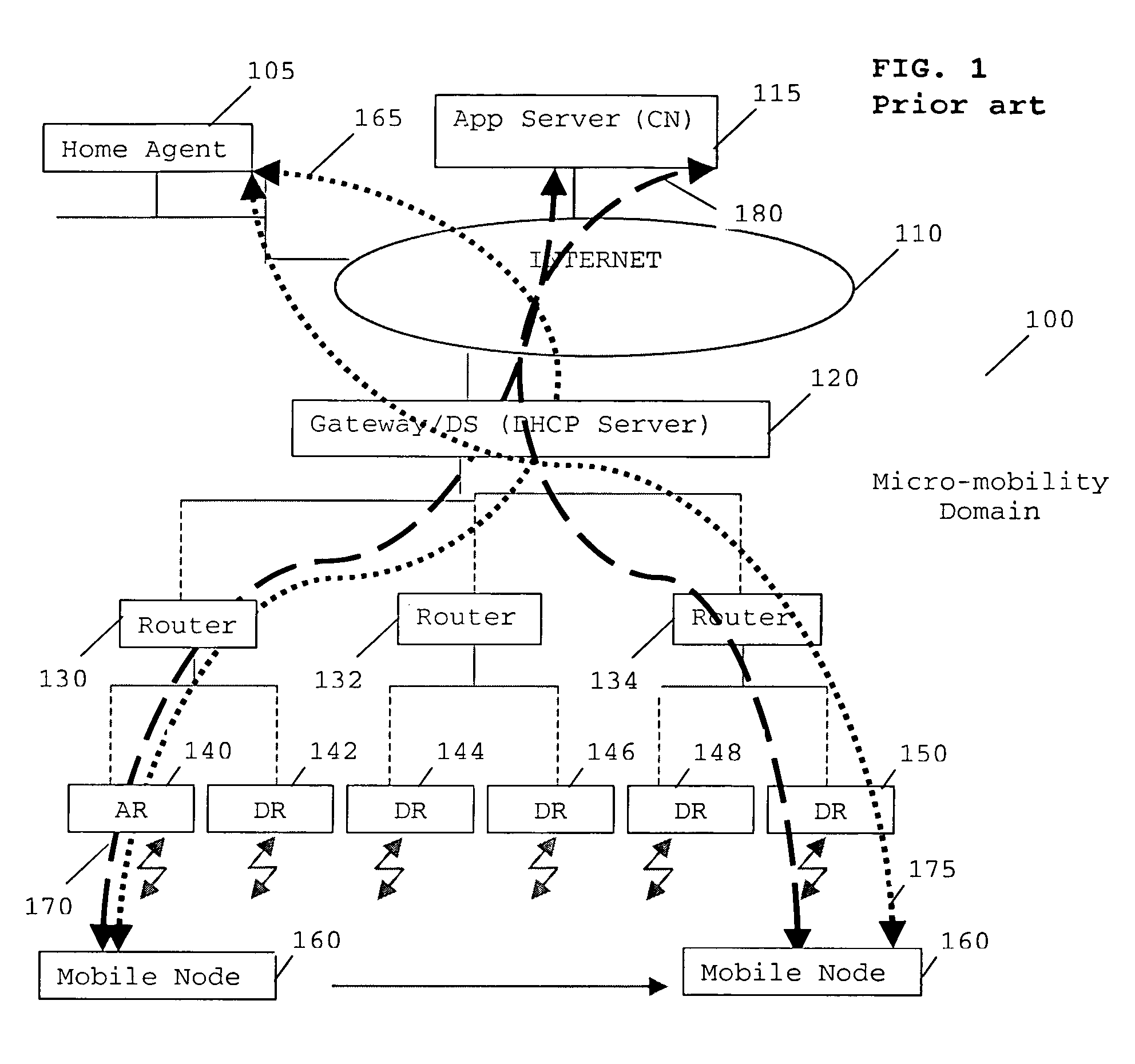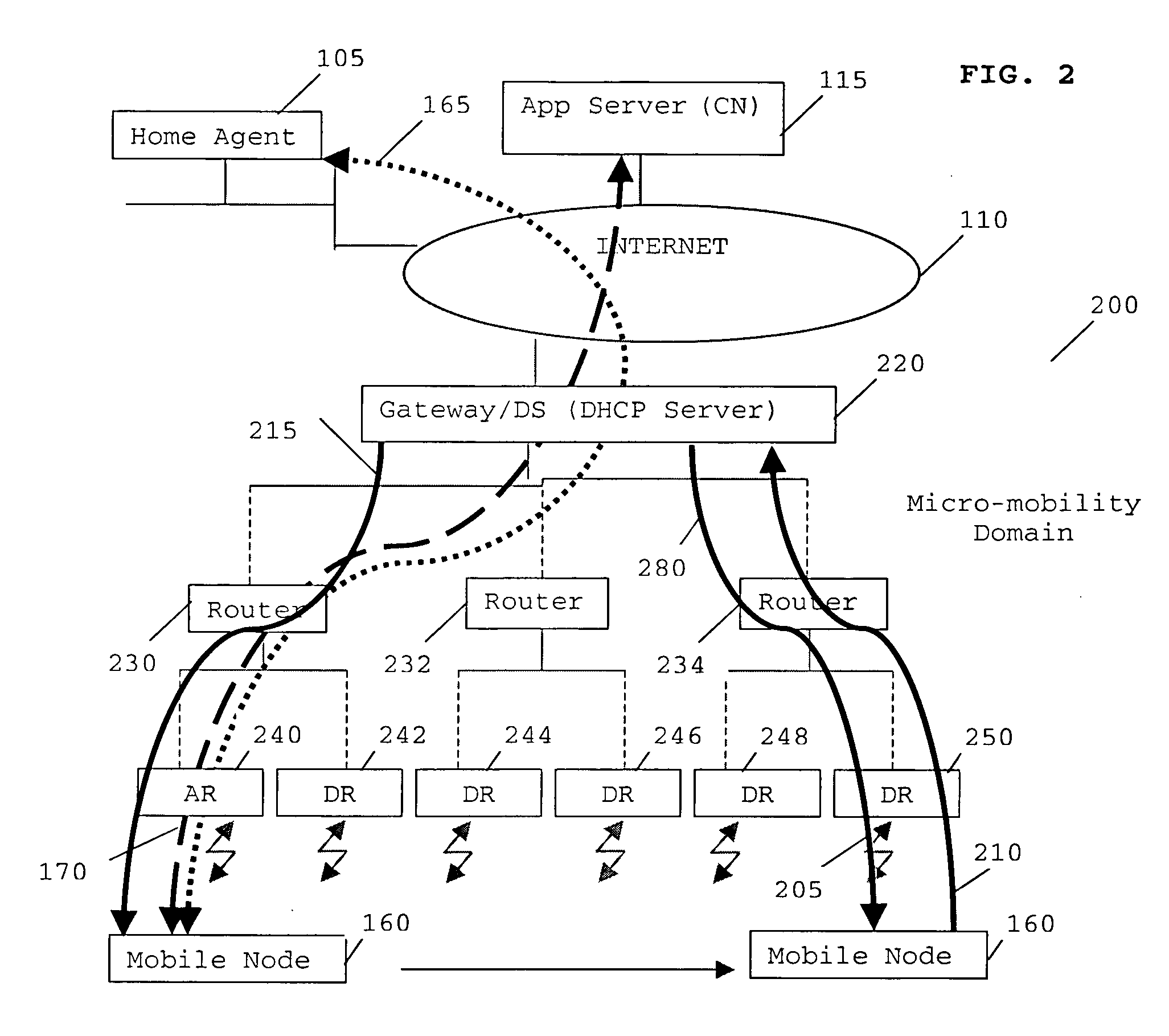Routing in a data communication network
a data communication network and routing technology, applied in the field of data flow in communication and computer networks, can solve the problems of unsuitability, network that employs an ietf mobile ipv6 protocol is not ideally suited for managing a micro, and inadequate static assignment of ip addresses
- Summary
- Abstract
- Description
- Claims
- Application Information
AI Technical Summary
Benefits of technology
Problems solved by technology
Method used
Image
Examples
Embodiment Construction
[0060] Referring now to FIG. 2, a network configuration is illustrated in accordance with the preferred embodiment of the present invention. The network configuration preferably employs the IETF Mobile IPv6 protocol. As an example, a network that is frequently found in a campus-type mobility network is shown. The network uses link technologies such as Ethernet and 802.11b.
[0061] The preferred network topology, as illustrated in FIG. 2, is a tree-type structure as known to those skilled in the art. However, although the preferred embodiment is described with reference to a tree-type structure, the inventive concepts described herein are equally applicable to any mesh-type structure. Conceptually, the root of the tree corresponds to the DHCP server (DS), with the MN movement managed only by the leaves of the tree. The preferred embodiment shows the last hops as using wireless access media, to communicate to the mobile nodes, although any access mechanism is acceptable (including dial...
PUM
 Login to View More
Login to View More Abstract
Description
Claims
Application Information
 Login to View More
Login to View More - R&D
- Intellectual Property
- Life Sciences
- Materials
- Tech Scout
- Unparalleled Data Quality
- Higher Quality Content
- 60% Fewer Hallucinations
Browse by: Latest US Patents, China's latest patents, Technical Efficacy Thesaurus, Application Domain, Technology Topic, Popular Technical Reports.
© 2025 PatSnap. All rights reserved.Legal|Privacy policy|Modern Slavery Act Transparency Statement|Sitemap|About US| Contact US: help@patsnap.com



